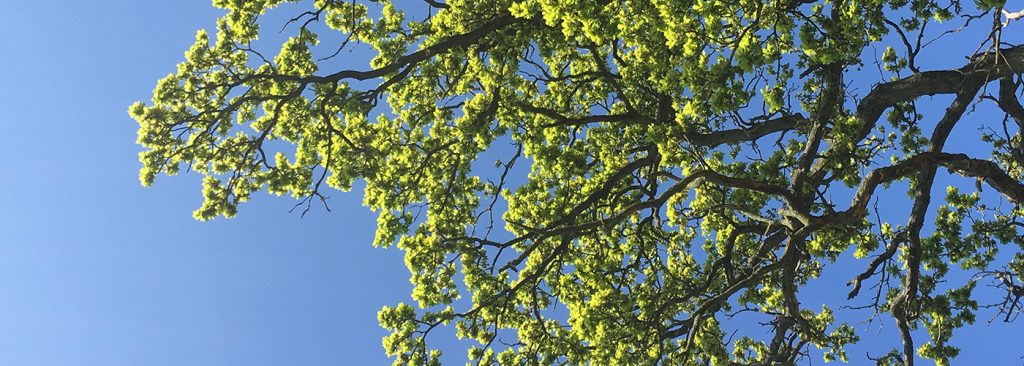Introducing our new website
By Léonie Caldecott

“Every oak tree started out as a couple of nuts who stood their ground.”
Henry David Thoreau
In 2016 the winner of the Royal Television Society award for best Science and Natural History programme was a remarkable 90 minute documentary all about a single tree. Oak Tree: Nature’s Greatest Survivor told the story of a year in the life of a 400-year-old oak in Wytham woods near Oxford. Originally broadcast by BBC4 on 1st October 2015, the film unpacked in marvellous detail not only how the oak functions and grows—its root system with its threads of mycorrhizal fungi, large enough to stretch around the entire earth—but also about the historical significance of the oak. Prized and thus cultivated for its resilience and flexibility, oak wood was at one time used to construct everything from ships to buildings. In earlier centuries, this powered the economy of the British Isles, not to mention the export of our culture, as well as playing a vital role in expressions of faith such as the intricately constructed tower of Salisbury Cathedral.
More than this: a curious evolutionary quirk whereby certain kinds of wasp take over acorns in order to incubate their young, produce oddly shaped “oak galls” which for over fourteen centuries were ground up and mixed with iron sulphate, gum arabic and water. This created the indelible ink used to write everything from the Magna Carta to the music of Mozart. As Dr George McGavin, the softly spoken presenter from Oxford University put it: “Unwittingly the oak tree has enabled us to record our past, to explore our most profound ideas and to share our deepest emotions.”
Why am I telling you all this? Because when we set out to redesign our website here at Second Spring, somehow the oak got into the picture. Rose-Marie Caldecott’s painting “The Second Spring”, featured on our home page, portrays the familiar landscape of an English spring: the promise of sunshine mixed with the equal promise of rain, warm hours interspersed with cold winds. As well as being the symbol of England, the oak tree is surely an apt symbol of the resilience needed to remain productive and fertile in the midst of inhospitable conditions.
Wood: that substance on which God-made-man stretched himself out in that mysterium tremendum, is conceived of here as a sign of new life being added to the old. In place of the rainbow which normally unites sunshine and rain, the sign of the ancient covenant cast above the floodwaters, our noble tree roots the crux of the matter back in the earth. It is surely no coincidence that in The Lord of the Rings Gandalf the White, rescued miraculously from the maw of the Balrog, is discovered after the encounter with the Ents of Fanghorn Forest. Ents are slow-moving, considered creatures. For an Ent, as for any tree, there is no such thing as a state of emergency. Trees, particularly those whose lifespan encompasses centuries, give us a sense of perspective. It is no coincidence that it is trees which provide us with oxygen; nor that they emit chemicals which help to assuage the ravages of time and sting of loss.
We who stand under the sheltering arms of the Tree of Life, on which Christ made all things new, invite you to share this refreshed vision with us: to read us online and in print, gathering with us under these branches which provide both material to build a culture, and gall to feed the Word to which we must continually give utterance.
Léonie Caldecott is the Director of Second Spring.
Learn more about the history of Second Spring and the Centre for Faith & Culture here.

